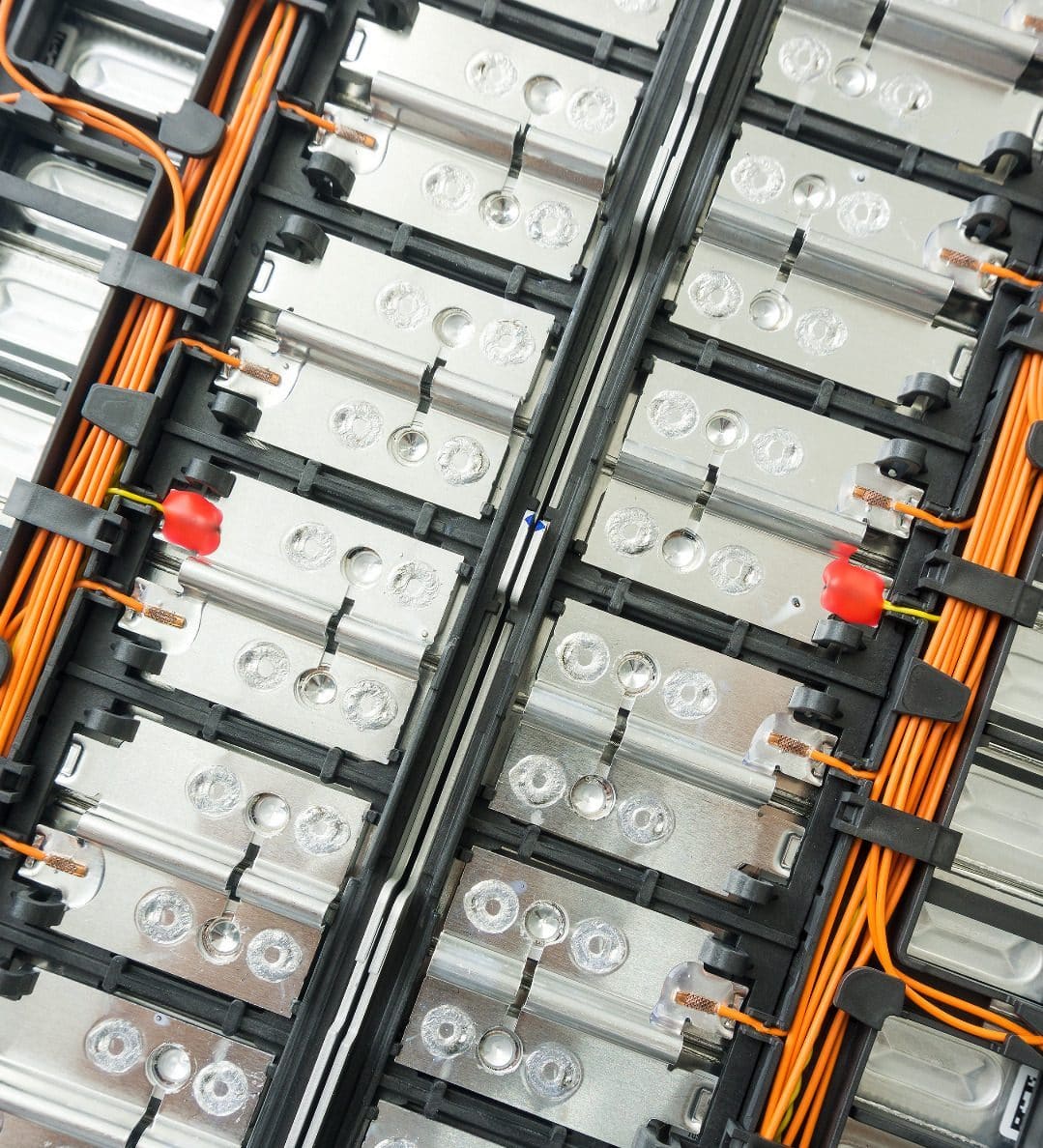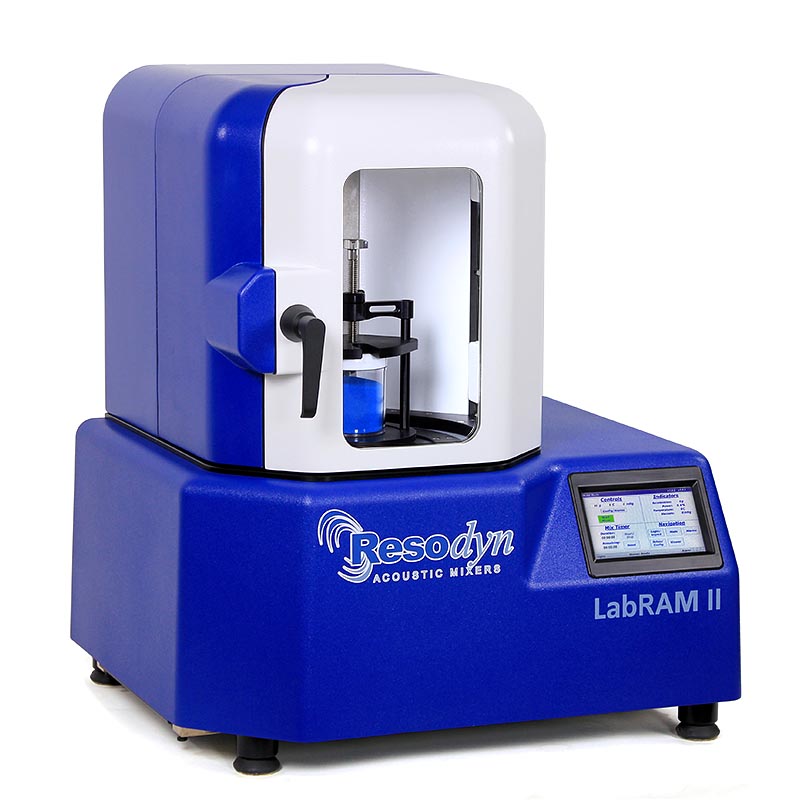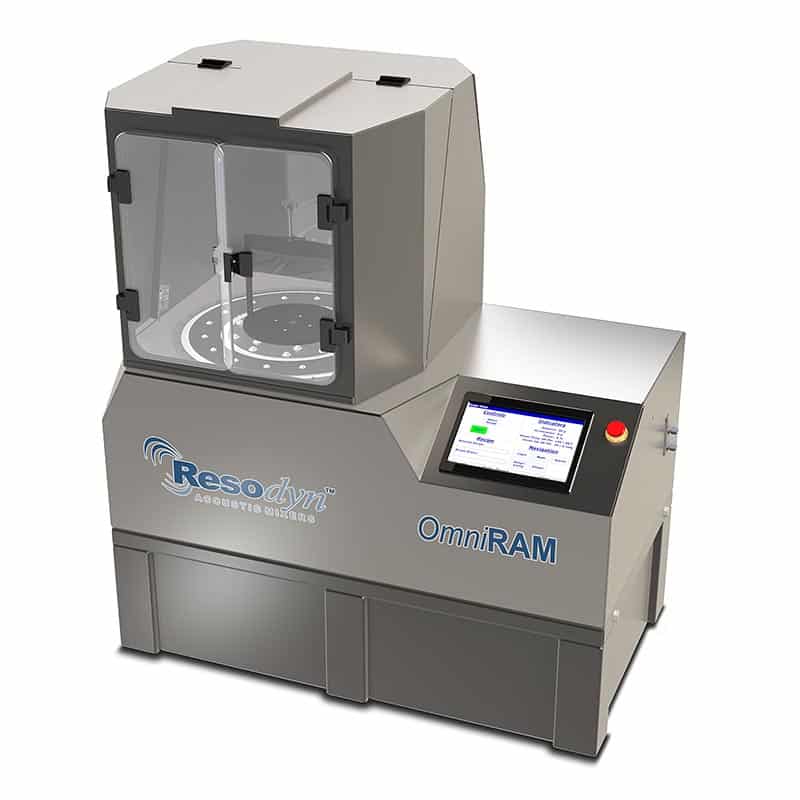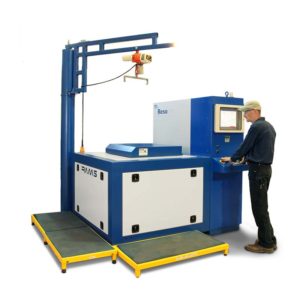Home » Industries Served » Battery | Energy Storage
ADVANDED MIXING TECHNOLOGY
for the BATTERY/ENERGY
STORAGE INDUSTRY
Resodyn Acoustic Mixers, Inc. supplies its advanced mixing technology to the Energy Storage Industry enabling manufacturers to quickly and efficiently process diverse battery materials for high performance applications.
The ResonantAcoustic® Mixer (RAM) products are bladeless and support a range of mixing needs. Materials of different bulk densities, sizes and morphologies are easily mixed. Pastes, gels and powders are accurately batched and evenly dispersed.
RAM systems are fast and effective. Mixing times have been illustrated to be reduced from hours to minutes. Production scale-up is seamless with technical consistency via varying product capacities.
Best in class repeatability delivers precision application for:
- Aluminum Oxide-filled Silicone Gels
- Battery Pastes and Slurries
- Conductive Inks
- Copper Pastes
- Encapsulation Materials
- Epoxy Insulators
- Ferrite Compounds
- Ferrite in Propylene
- Fuel Cell Powders
- Solder Pastes
- Thick Film Inks
- Tungsten Carbine Powders

INDUSTRY EXPERT
TESTIMONIALS
…we have made our first steps with the new LabRam II from Resodyn Acoustic Mixers. With this second resonant acoustic mixer, we wereable to add another batch size to our large portfolio of different mixing technologies…”
- European battery materials research organization
“We work with multiple battery material mixes, including powder-powder, slurries and pastes. [RAM] gives us a quick, easy and convenient method of mixing, milling and sieving those materials in a single unit.”
- Global energy storage products company
“... the cathode exhibited a higher specific capacity and improved rate performance because of the minimal side reactions at the cathode−solid electrolyte interface. These results demonstrate the success of the Resonant Acoustic® coating of NiCo2S4 NPs on NCM 622.”
- NiCo2S4 Bi-metal Sulfide Coating on LiNi0.6Co0.2Mn0.2O2
Cathode for High-Performance All-Solid-State Lithium Batteries Young-Jin Kim, Rajesh Rajagopal, Sung Kang, and Kwang-Sun Ryu
ACS Omega 2021 6 (10), 6824-6835 DOI: 10.1021/acsomega.0c05942
RAM MIXING
BENEFITS
RAM’s intense yet low-sheer technology processes materials of nearly any particle size or behavior. Whether cohesive, agglomerated, nano-scale, or temperature sensitive, RAM’s features can disperse homogeneously, control temperatures, apply vacuum, dry or spray coat one particle on another, and effectively process any combination of powders, liquids, highly viscous or solids-loaded materials with exceptional repeatability.
The world’s top energy storage and technology firms already rely on RAM’s ability to rapidly switch from one set of ingredients to another, while changing only the processing vessel and the mixing parameters. Cross-contamination, excess movement, and potentially dangerous material handling are minimized.
RAM technology uses low-frequency sound energy to thoroughly mix particles of often vastly different characteristics. Mix times of hours are frequently reduced to minutes and previously unmixable ingredients process uniformly and thoroughly.
LEARN MORE ABOUT HOW
RAM CAN HELP YOU
Loaded Polymer Blending
To illustrate a heavily loaded polymer blend, two materials of very different particle sizes are blended with a polymer surrogate. This footage documents the nature of the material blending and integration into a heavily loaded (~85%) polymer based paste. The use of RAM™ technology is ideally suited for loading of solids into polymers and mixing to a high rate of dispersion and consistent viscosity throughout the blend.
Dissimilar Powder Mixing
Dry ingredients can be difficult to thoroughly and consistently mix, particularly when the particles are of different sizes and characteristics. To illustrate effective and rapid mixing, 10 grams of fumed silica is blended with 100 grams of sand. Completed specimens exhibit no airborne fumed silica, demonstrating uniform blending at an order of magnitude difference in particle size.
Milling and Nano Coating
Coating larger particles with smaller ones is a common processing application, and milling is often a part of the same process. In this video, agglomerated carbon black particles are simultaneously milled to nano size particles that coat the plastic pellets completely in just a few seconds. The high speed video clearly illustrates the dispersion of carbon black particles, their de-agglomeration, and progressive and comprehensive coating of the plastic pellets.
BATTERY DEVELOPMENT
PRODUCTS
LabRAM II
1,000 gram capacity for recipe development
OmniRAM
5 kg capacity for pilot-scale production
RAM 5
36 kg capacity for pilot and production scale









